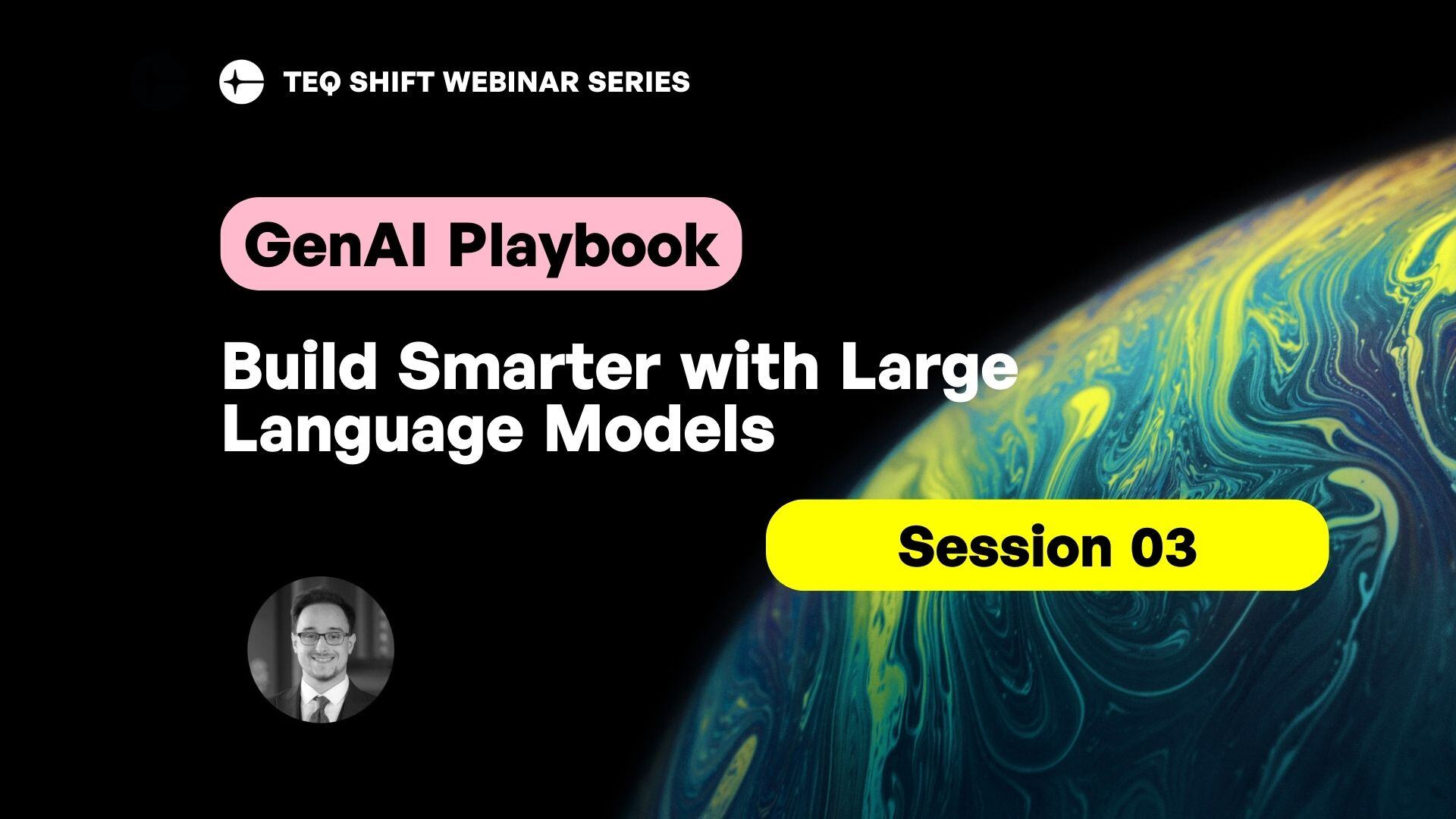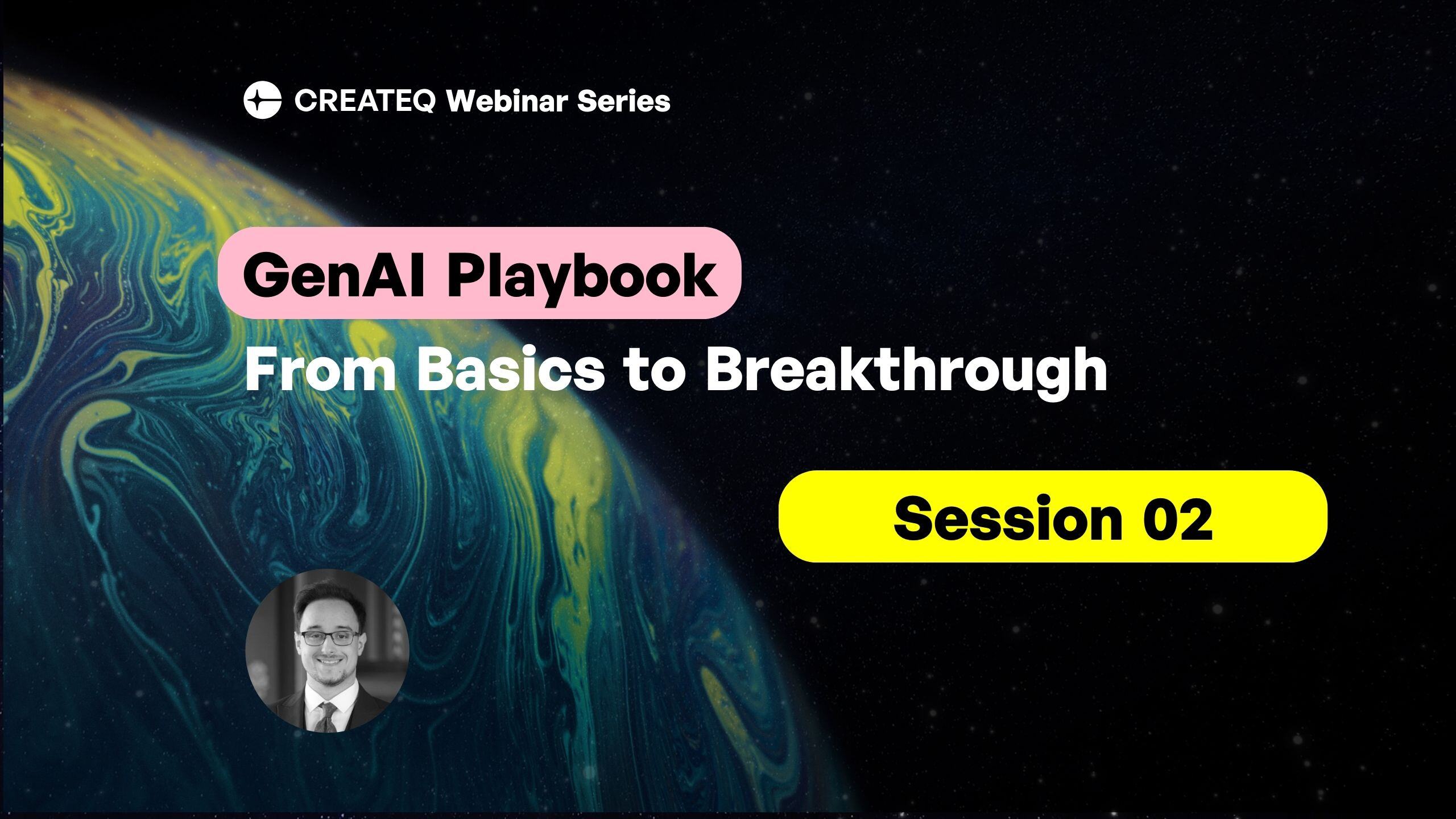Following our previous exploration into generative AI and its strategic implementation, we’re diving deeper into the technical backbone of this transformative technology. If you joined us for the last session, you already know how crucial practical insights are for driving innovation.
So, you're a tech leader who's dipped a toe (or perhaps both feet) into the vast ocean of generative AI. You've probably heard terms like GPT, LLMs, BERT, and wondered, "What's really going on under the hood?" If this sounds like you, keep reading. We've just hosted an insightful session at CREATEQ, focusing specifically on these powerful beasts: Large Language Models (LLMs).
Unpacking Neural Networks: A Quick Refresher
Before diving into the depths of LLMs, let’s briefly recap the neural network foundation:
-
Neural networks predict by adjusting internal 'weights' through forward passes, backward propagation, and optimisation functions.
-
ReLU, sigmoid, and softmax are common activation functions crucial in making neural nets learn complex patterns.
-
Overfitting, a common challenge, occurs when a model learns training data too well but struggles with new, unseen data.
This foundation, discussed in our earlier session, sets the stage for understanding more complex architectures.
The Evolution of NLP: From Basic to BERT and Beyond
Remember the days of simple one-hot encodings? Fast forward to today, NLP has evolved through innovations like word embeddings, LSTMs, and Transformers. Let’s spotlight the game changers:
BERT - Google’s Bidirectional Marvel
Google’s BERT, a bidirectional encoder-based model, processes language from both directions, giving it unmatched context understanding for analytical tasks like sentiment analysis and spam detection.
GPT - Generating Text, One Token at a Time
GPT models, particularly from OpenAI, rely on decoder-based architectures, excelling in generative tasks like storytelling and summarisation. GPT-4, now widely used, introduced multimodal capabilities, combining text and images.
Inside GPT’s Engine: Temperature Matters
Ever wondered why GPT never answers exactly the same way twice? The 'temperature' setting in GPT affects randomness and creativity. Lower temperatures yield factual, predictable answers—perfect for coding or translation tasks. Higher temperatures bring creativity, ideal for brainstorming or storytelling.
This aspect connects directly to the previously discussed strategic considerations, such as managing unpredictability in generative AI deployments.
API Insights & Practical Applications
OpenAI's API, popular yet stateless, requires manual context management. Recently introduced 'response' APIs add statefulness, simplifying integration. Practically speaking, GPT can:
-
Translate languages seamlessly
-
Perform accurate sentiment analysis
-
Filter spam with near-human precision
-
Structure messy, unstructured text data
-
Summarise extensive documents like annual reports swiftly
These practical capabilities align closely with the strategic integration tips shared in our earlier article, particularly in streamlining business operations through AI.
Breaking the Mould: DeepSeek and Gemini
New challengers have entered the ring:
-
DeepSeek, promising high performance at reduced costs through sparse activation and expert-based models.
-
Google Gemini, extending multimodal capabilities further by accepting videos and audio alongside text and images.
Gemini notably stands out with native multimodal integration, giving it a slight edge in complex data tasks. Such advancements directly impact strategic decision-making about technology adoption, as previously discussed.
What’s Next?
We're just scratching the surface. In our upcoming session, we will dive into prompt engineering techniques—such as zero-shot, few-shot, and chain-of-thought methods—and explore advanced use cases including retrieval-augmented generation (RAG), stateful API interactions, and local deployment of open-source models.
Stay tuned for detailed code demonstrations and further practical insights designed to empower your AI strategy!




